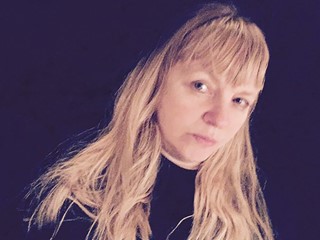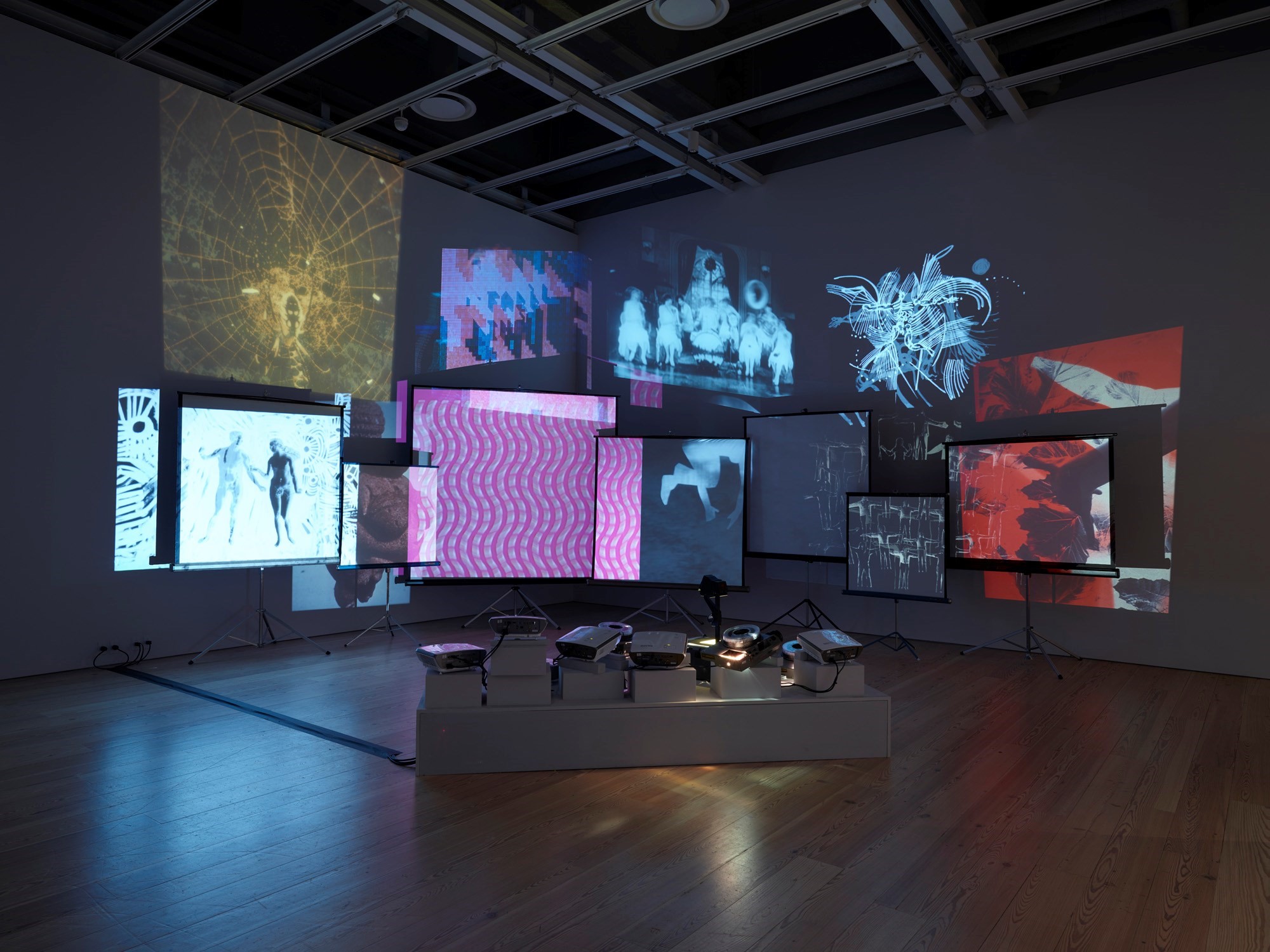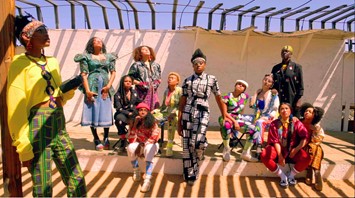“I’m only interested in the present and the future in the way I work and think,” curator Chrissie Iles states in response to my asking about her career trajectory. Iles’ mind works like no other, agilely drawing lines and parallels that splice through culture, geography, history and time. Many of her exhibitions are thematic provocations that reframe the way we think about the world.
Iles was born in Beirut, and lived in the Middle East and the Mediterranean before moving to England when she was ten. An early exposure to different languages and cultures was good preparation for a life in New York. Now curator at the Whitney Museum of American Art she explains, “the Whitney hired me at a moment when art and film were coming closer together, and I wanted to curate and build a film and video collection that reflected the increasing importance of the moving image for artists, and the dialogue between art and cinema that has been going on for so many decades”.
Her role in culture has been one of audacious visionary, consistently offering something before people have realised they needed it. Her curatorial style is instinctive and artist-centric. Snuggled in her office, filled with books, I tried to pry out of Chrissie how she’s got to where she is.

Shonagh Marshall: You are one of the curators at the Whitney Museum of American Art. How do you define your role?
Chrissie Iles: I am part of an intergenerational team of curators at the Whitney curating exhibitions and building the permanent collection. I work with young, emerging artists as well as established, historical figures. In my curating and acquisitions, I’m always looking at history through the lens of the present. At certain moments culture changes faster than in others, and we are in a particularly intense and radical moment right now globally, in terms of politics and social change. What does culture mean at this moment, at the beginning of a new decade, a new century, and a new millennium? How can I contribute? What can I help to articulate about this present moment?
SM: When did you realise that you wanted to work with artists? Did you have a eureka moment?
CI: Yes. A friend’s mother took my friend and I to an artist’s studio when I was 12. I had never been to an artist’s studio before, and I felt immediately at home. There was something about the light, the quiet, the smell of the materials and the atmosphere of creativity. The studio is a private space, where artists are engaged in a process of thinking, working and making. To me that space expressed the potential of all of us at our best selves. There and then, I knew that I wanted to be close to artists, and to their process of working.
SM: You went on to study Art History at Bristol University, and your first role in the art world was working closely with artists. How did this come about?
CI: After university and a postgraduate curating course in London, I came across the Waterloo Gallery and Studios, a warehouse with artists’ studios and a large gallery that the artists ran themselves. I introduced myself to one of the artists and offered to run the gallery and raise my own salary. To my delight, they said yes. I had no experience, but a lot of energy. One show was a sound installation by ex-members of the band Wire, who stretched high tension wires across the space from floor to ceiling at various angles, which struck a note as you touched them. The entire gallery became a kind of musical instrument. I think Brian Eno was involved too. The gallery was very experimental.
SM: The Waterloo Gallery and Studios ceased to exist when the council wanted the building back. What did you do next?
CI: I tried to find a new space for the artists and the gallery. Hackney Council offered us several spaces, but they were only available for a year and the artists needed something more stable. After visiting a number of buildings in the East End no long term space could be found, and the artists went their different ways. I would have taken a space for a year just to be able to curate shows; but I was loyal to the artists, and didn’t want to do it without finding studios for them. After that I did some freelance curatorial projects, then went to work as Robin Klassnik’s assistant at Matt’s Gallery.

SM: What was it like working with Robin Klassnik?
CI: I learnt a lot about how to work with artists; how to put the artist first and listen to them closely, and that nothing is too much trouble; Robin once spent three days lighting one painting to get it exactly right. The gallery used to be Robin’s studio; so I guess I was doing exactly what I had dreamed of. I learnt from Robin rigour, empathy, and a respect for artists that I’ve carried with me ever since.
SM: After working at Matt’s Gallery you went on to be the curator at Modern Art Oxford, working closely with its director David Elliott. What was your time like there?
CI: David Elliott was crucial to my curatorial development. He mentored me and took scholarship and pedagogical exchange very seriously. He encouraged me to read and learn, and his critiques of my catalogue essays were like seminars. He introduced me to all the artists, scholars and cultural figures who came to the museum, and to Oxford. If Baudrillard, Umberto Eco, Noam Chomsky or Isaiah Berlin were lecturing, he would take me with him. Once he sent me in his place to a conference of museum directors in Paris. He just threw me in at the deep end. He had, and still has, a strong intellectual curiosity. He is also a risk-taker culturally, curating the first shows of Mayakovsky, and of Rodchenko outside Russia, as well as shows of art from China after Tiananmen Square, and from South Africa. Desmond Tutu came to the opening. He didn’t have a separate office; my desk was next to his, and I would listen to everyone who came in to pitch an exhibition. I learnt a lot from reading their proposals and quietly listening to their ideas. All this took place in the middle of an intellectually rigorous academic community who did not take contemporary art very seriously. I learnt to be an ambassador for art, representing the museum in at various Oxford College events, surrounded by older white male scientists, mathematicians and philosophers. It was useful to learn how to defend contemporary art and articulate why it is so important.
SM: During this time you curated exhibitions such as Signs of the Times: Film, Video and Slide Installations in the 1980s (1990) and Scream and Scream Again: Film and Art (1996) that laid the groundwork for recent exhibitions such as Dreamlands: Immersive Cinema and Art 1905-2016 (2016) in your current role at the Whitney. How do you arrive at your curatorial ideas?
CI: I learnt from those early experiences how to give the experimental ways in which artists work a voice within the institution, and how to map out those histories. What is the role of the museum? How can you best present the artist’s ideas to the public? How can you be an interlocutor between one and the other? You have a responsibility to the art, to the artist, to the public, and to history. I learnt early on that the more deeply you are immersed in an ongoing dialogue with the artists, the more clearly you understand the realities of how artists live, think and work, and that enables you to care for the art and protect the intentions of the artist within the institutional parameters of the museum. At the same time you need to have a critical eye, and avoid becoming seduced by trends, the pressures of the art market, or distracting subjectivities; those all pass, in time. I’m interested in what remains when the fuss has died down. I’m a great believer in the simple practice of having an eye. If you have an in-depth knowledge of your field, you are able to calibrate the delicate balance between taste and expertise. When you are building a collection, each work has to speak to audiences across history, when the specific social surroundings of any cultural moment have melted away. All that will be left is the art itself. How will it stand up to the test of time?
SM: How does the time we are living in factor into the way you curate exhibitions?
CI: My exhibitions are always intuitive responses to a particular moment, or reflections on historical moments that feel highly relevant now. It is important to be intellectually and culturally curious, well read, thoughtful, and to listen closely. I learn most from artists; how they process the world, how they understand it, and how they think about it; the things that are important to them; what they read, the way they understand history, and imagine the future. I also listen to a lot of podcasts, read a lot of books, attend lectures and conferences, and talk to scholars in other fields. In conversations with a marine biologist who is working with Joan Jonas, for example, I learnt from the different perspectives of the artist and the scientist how the current dramatic acceleration of evolution, and the sixth extinction that we are in the middle of, is profoundly changing everything. The marine biologist is studying the ocean floor, and the artist is working with the video footage he shoots there.

SM: You mentioned that you thought the speed of change in the present is alarmingly rapid. How are you thinking about this in a historical sense?
CI: The books being written, the art, dance, theatre, films, fashion, poetry, music being made, the communities being formed and strengthened, the activism and community support, the empathic communication, all speak to the current moment, and this unprecedently fluid and transformative time. There is a rigour and an intensity of purpose that emerged at the beginning of the last century, then again during the 1960s, and has reappeared now with a new intensity and focus, with the looming catastrophe of climate change. New technology, AI, the internet, social media and iPhones can empower us or destroy us; it’s up to us. The most important recent shift has been the empowering of black, brown and indigenous artists, in America, and globally. The process of decolonising curatorial assumptions is absolutely necessary in order for the cultural landscape to more clearly reflect non-white ideas of what art and creativity is, for artists and audiences. There is no logical reason why white people should be dominating the field. It doesn’t reflect the larger society. We are seeing the speed of that change increasing, and the change will be permanent.
SM: Do you also sense a feeling of futility with the climate crisis looming over us?
CI: In the current impending catastrophe of climate change, to be racist, ageist, misogynistic or divisive in any way that harms others hampers our ability to work together. That’s why these shifts feel so urgent, and we need to make them in order to survive. All of this shapes my curatorial thinking, and influences every decision I make, what I acquire for the collection, and what I choose to show. We have to adapt, embrace our differences, and support each other. This is what the 21st century looks like.
